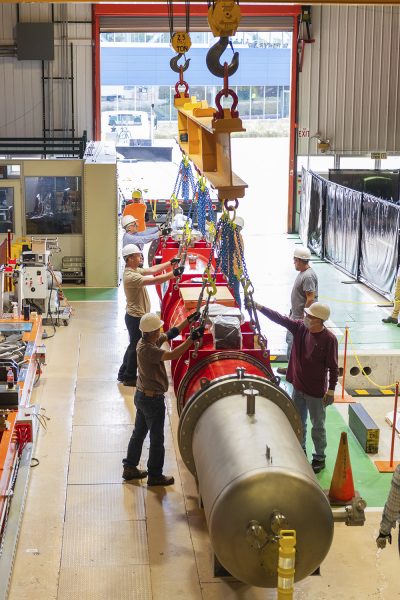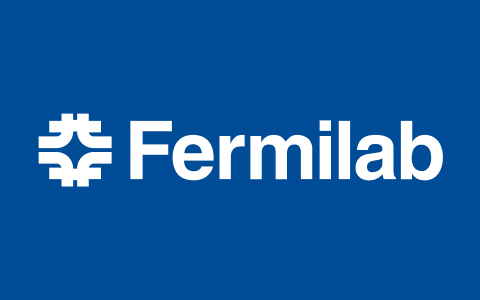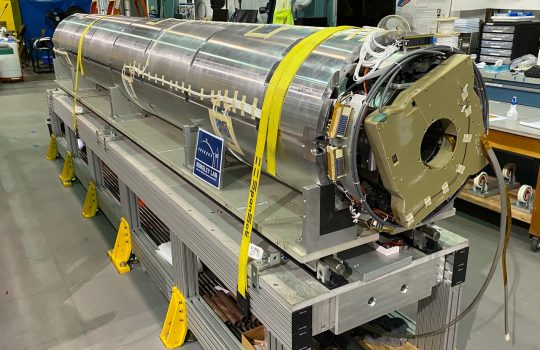Scientists and engineers are preparing to make the world’s biggest supercollider even more powerful with the High Luminosity upgrade to the Large Hadron Collider, or HL-LHC. This upgrade will increase the amount of data collected from particle collisions by an order of magnitude and enable new insights into rare physical phenomena. But how can scientists be sure that the new components will play together in harmony? According to CERN engineer Marta Bajko, this is the role of the HL-LHC string test, which is testing a line of interconnected magnets prior to their installation in the tunnel.
“We are reproducing the section of the accelerator that will be on the left side of the CMS experiment,” said Bajko, who is leading the string test. “This will let us characterize the collective behavior of the components.”

The Large Hadron Collider is made from millions of pieces that work together to steer particles and accelerate them to just under the speed of light. The string test allows engineers to verify that the individually tested components of the upgrade — some of which were made and tested in America — can function cohesively before they are installed around the HL-LHC’s collision points 100 meters underground.
“All the equipment is there,” said Giorgio Apollinari, a scientist at the U.S. Department of Energy’s Fermi National Laboratory and the project director of the HL-LHC Accelerator Upgrade Project. “Everything will operate at the nominal current; it’s the real LHC, but only 100 meters of it and not the full 27 kilometers.”
Several components developed, assembled and tested by the Accelerator Upgrade Project, a consortium of U.S. national laboratories and institutions, including Lawrence Berkeley National Laboratory, Brookhaven National Laboratory and Fermilab, debuted in the string test. Among them are four quadrupole accelerator magnets, shipped from Fermilab to CERN earlier this year.
“They were the final piece of the puzzle,” Bajko said.
These quadrupoles are 25 tons each and contain everything needed to focus the proton beams that will pass through their cores, including coils made from a new type of superconducting material.
“They are all based on this niobium-three-tin technology, which we as humanity are using for the first time in an accelerator,” Apollinari said.

According to Apollinari, the current LHC magnets are made from coils of niobium-titanium, a flexible superconductor that can achieve a magnetic field in a particle accelerator of up to 8 tesla, which is approximately 8,000 times stronger than a typical fridge magnet. But this is not strong enough for the planned high luminosity upgrade, which will pack twice as many protons into an even smaller beam volume. By contrast, niobium-three-tin can carry more current and reach magnetic fields around 50% higher than niobium titanium. The problem is that niobium-three-tin is difficult to work with.
“It is very brittle since it requires a high temperature heat treatment to make it into a superconductor,” Apollinari said.
While CERN was constructing the LHC in the late 2000s, scientists in the U.S. started experimenting with niobium-three-tin as the basis for future LHC accelerator magnets.
“Our American colleagues were the pioneers of this new technology,” Bajko said. “I was working on magnet design at the time, and two or three times a week, the Americans would wake up very early or we would stay at CERN very late so that we could discuss and exchange ideas.”
Bajko recalls that CERN and Fermilab worked together so closely that they were eventually able to build coils that are identical.
“We were able to put American coils and CERN coils into the same quadrupole,” Bajko said. “That was a very beautiful collaboration.”
Scientists and engineers have spent more than two decades preparing for the HL-LHC, and the string test is the final check before the new magnets are installed around the LHC’s collision points.
According to Bajko, engineers recently finished connecting all the magnets and are currently pressure testing the entire system. In September, they plan to cool the chain down to minus 456.25 degrees Fahrenheit, which is just 1.8 degrees above absolute zero. Before the end of the year, she hopes to power-up the chain to 17,300 amps, which is equivalent to a bolt of lightning continuously running through the magnetic coils.
“This is a huge project, and no one lab can do it alone,” Bajko said. “We need our partners, and we are happy that our partners have been there to share the technical challenges with us.”
Fermi National Accelerator Laboratory is America’s premier national laboratory for particle physics and accelerator research. Fermi Forward Discovery Group manages Fermilab for the U.S. Department of Energy Office of Science. Visit Fermilab’s website at www.fnal.gov and follow us on social media.

